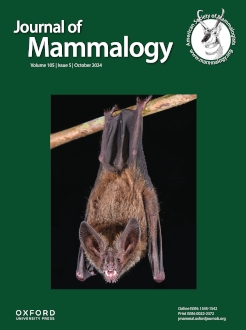Accurate taxonomic species identification is essential to the study of mammals. Despite this necessity, rapid and accurate identification of cryptic, understudied, and elusive mammals remains challenging. Traditional barcoding of mitochondrial genes is standard for molecular identification but requires time-consuming wet-lab methodologies. Recent bioinformatic advancements for nanopore sequencing data offer exciting opportunities for noninvasive and field-based identification of mammals. Nanopore adaptive sampling (NAS), a polymerase chain reaction (PCR)-free method, selectively sequences regions of DNA according to user-specified reference databases. Here, we utilized NAS to enrich mammalian mitochondrial genome sequencing to identify species. Fecal DNA extractions were sequenced from 9 mammals, several collected in collaboration with Minnesota Tribal Nations, to demonstrate utility for NAS barcoding of noninvasive samples. By mapping to the entire National Center for Biotechnology Information mammalian mitochondrial reference genome database and bioinformatically analyzing highly similar matches, we successfully produced species identifications for all fecal samples. Eight of 9 species identifications matched previous PCR or animal/fecal appearance-based identifications. For the ninth species, our genetic data indicate a misidentification stemming from the original study. Our approach has a range of applications—particularly in field-based wildlife research, conservation, disease surveillance, and monitoring of wildlife trade. Of importance to Minnesota tribes is invasive species monitoring, detections, and confirmation as climate impacts cause changes in biodiversity and shifts in species distributions. The rapid assessment techniques described here will be useful as new introductions and range expansions of native and invasive species may first be detected by the presence of signs such as scat rather than direct observations and will be helpful for chronically understaffed tribal natural resources agencies.
BioOne.org will be down briefly for maintenance on 12 February 2025 between 18:00-21:00 Pacific Time US. We apologize for any inconvenience.
How to translate text using browser tools
6 May 2024
Rapid molecular species identification of mammalian scat samples using nanopore adaptive sampling
Lexi E. Frank,
Laramie L. Lindsey,
Evan J. Kipp,
Christopher Faulk,
Suzanne Stone,
Tanya M. Roerick,
Seth A. Moore,
Tiffany M. Wolf,
Peter A. Larsen
ACCESS THE FULL ARTICLE

Journal of Mammalogy
Vol. 105 • No. 5
October 2024
Vol. 105 • No. 5
October 2024
fecal DNA
MinION
mitochondrial DNA
molecular barcoding
nanopore sequencing
phylogenetics
species identification





